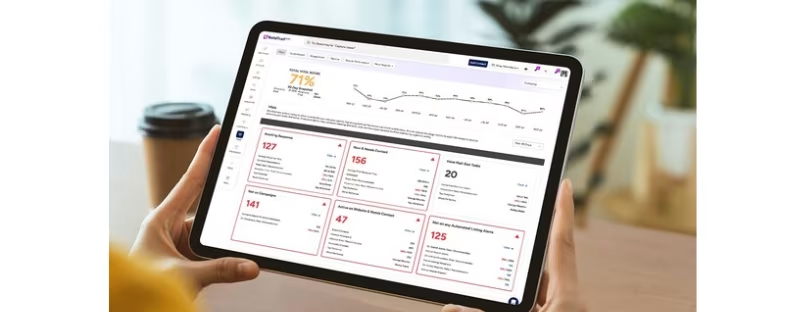
Speaking the local language: solving global IoT network challenges
Imagine the scenario: you’re the CIO of a healthcare business with thousands of IoT-enabled devices deployed around the world. iot network
They’re devices that people rely on, and they’re connected via the local mobile network. It’s midnight and you’ve been told that all your devices in Peru have lost connection, putting lives at risk.
You thumb through the details of the 76 mobile network operators (MNOs) covering every country your devices are deployed in, until you find the relevant supplier to call. Now, here’s the catch. Do you speak the technical, let alone local, language needed to diagnose the problem and bring the devices back online? Will you be speaking to enterprise-level global support or local support? More to the point: how can you ensure this scenario doesn’t become a reality?
When such scenarios occur, it’s often because the IoT devices in question are connected through a contract with a local network provider. If the CIO comes up against complex regional regulations such as the prohibition of long-term roaming, they may feel they have no choice but to contract with local MNOs to keep their devices online. In doing so, however, they take on the pain if any outages occur. But this is rarely their only option.
Of course, most CIOs would not profess to be telecoms experts and do not want to spend a large amount of their time essentially running a global virtual mobile network, so it can be difficult to know how to anticipate, mitigate, or fix outage issues or influence anything else that might prevent their devices from connecting to the network. They often rely heavily on the MNO, but those operators rarely prioritize IoT support, as their primary function is to serve mobile phone customers. Add in time zone and language differences to the mix, along with a spread of devices across multiple regions as well as legislations, using a regional MNO can be a recipe for disaster.
Maintaining a connection
For CIOs responsible for connecting devices that are now out of their control – for example, a healthcare device that’s been sold to an end consumer—this presents several business risks.
Once the device is sold, the manufacturer has little (if any) control over its location – and IoT connections governed and regulated by region can cause significant problems.
For example, in some regions, telecoms regulators prohibit network roaming for non-home devices beyond a given period (known as permanent roaming), at which point the device must be ‘localised’ onto a local telecoms network. This leaves the device at the mercy of the local network; therefore, it is important to select a localisation partner who provides a matching quality of service to deliver the required application service level.
While it might be possible to re-route mobile network traffic if you are using a managed connectivity service provider, when localizing traffic to a single network, this does increase the risk presented by network outages, which do happen. In fact, it’s also often possible for managed IoT service providers to foresee outages, and in theory, that leaves time to reroute the traffic before IoT devices are affected. But for many providers, IoT devices are at the bottom of their priority list (with many traditional networks treating IoT as an ‘add on’ to their main business), or they may not even have access to other networks. That can leave IoT device users and manufacturers helpless.
Ultimately, the CIO wants peace of mind that their device, wherever used, can connect to a reliable network longer term to deliver the required service to their customers, without the risk of it being disconnected due to regulatory restrictions or other. For a CIO of a multi-national or multi-region business, a multi-network connectivity solution that incorporates a localisation option can certainly help avoid any possible network outages longer term.
Safeguarding data security iot network
Even when reliable connectivity is established, other issues may arise, specifically around data security. When manufacturers release an IoT device into a standard network, they have little control over the regions to, or through, which their data is sent if traffic is re-routed. Unless the MNO can assure IoT users that all their re-routed traffic is consistently firewalled, that raises serious questions about data security and compliance.
An alternative to using regional networks is to partner with an IoT-specific virtual mobile network operator (V-MNO) with an abstracted, agnostic mobile network. These managed networks are designed and optimised, especially for IoT traffic and have multiple contracts with expert MNOs whose provision of a mobile network is, crucially, unrestricted by region, and managed according to their own requirements.
These managed networks are also run by teams that speak both technical and local languages and work with MNOs to meet the needs of IoT devices, whether they remain in the region of origin or leave it.
Specialist IoT connectivity providers can re-route traffic to entirely different networks if required, and by passing data through a private APN (Access Point Name) and VPNs, they can assure security throughout as well as near 100% device up-time.
If you are the CIO managing thousands of IoT devices around the world and choose to run it on an independent, agnostic-managed IoT network, the provider would simply re-route the devices to a functioning network, maintaining their connections, data security, and near-100% service provision. Nobody would have to be woken up at midnight, and no lives would be risked.
So, to sum-up, the CIOs at the healthcare business need not personally know or speak the technical and local language to work with MNOs and resolve complex IoT network challenges – nor should they be expected to. Instead, they can rest assured that a multi-network connectivity solution geared up for localisation has got them and their healthcare business covered, safeguarding their IoT estate’s connection and providing support whenever, and wherever, issues arise. iot network
Eseye are leading the way in IoT / M2M technology. Company has delivered over 200 IoT projects, in the past 10 years, across their 440 global cellular partnerships. Eseye people have developed over 1,000 device types.








